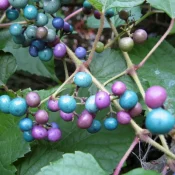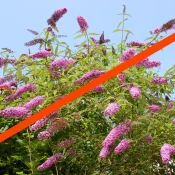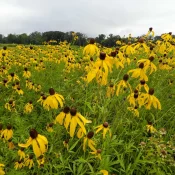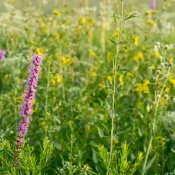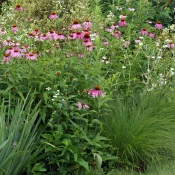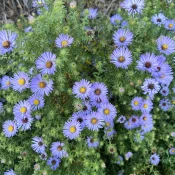How much time does native gardening take?
There is a strange misconception that gardening requires hours and hours of work and care. Native plants have grown for thousands of years with no human help at all. Native gardening requires very little time (unless you’d like to spend it!)
Non-native plants and lawns need special care and take hours of time. We did the math: lawns and non-native plants can take 2400% more time than a native garden. Plant a native garden to enjoy beautiful flowers, help the butterflies and hummingbirds, and get some time back.
Non-Native vs. Native Garden – Pros + Cons
Stacking up the pros and cons of a non-native versus a native garden makes it easy to see that native gardening saves time compared to non-native gardening.
Here’s the difference in a quick overview:
Non-Native Garden
Basic needs for a non-native flower garden-
Needs water during drought periods
-
Can require digging up bulbs
-
Seasonal fertilizing
-
Requires weeding (or chemicals)
Native Garden
Basic needs for a native flower garden-
Only needs rain
-
Perennials come back year after year
-
No special care after plants are established
-
No weeding with mulch or gravel
Native plants make gardening easy
Don’t be intimidated: gardening with native plants is easy! We may have all encountered a gardening article or interview that makes gardening seem cumbersome or better left to professionals. But planting native is so easy that native plants literally plant themselves with no human assistance at all.
Let’s dig deeper (pun definitely intended) and see how much time native gardening takes, and tackle some of the intimidating stories you may have heard. We’re going to look at:
- The difference between native and non-native plants
- Non-native vs. native gardening
- Native gardens vs. lawns
Native vs. Non-Native Plants
First up, let’s talk about native plants vs. non-native plants. Let’s start with native.
Native plants have grown in an area for thousands of years. They are built to thrive in their home area’s weather, temperature, and soil. When planted in an area that mimics their home in nature, they thrive with just rain. Native plants are also the preferred food and habitat for the bugs, butterflies, birds, and animals in their home area.
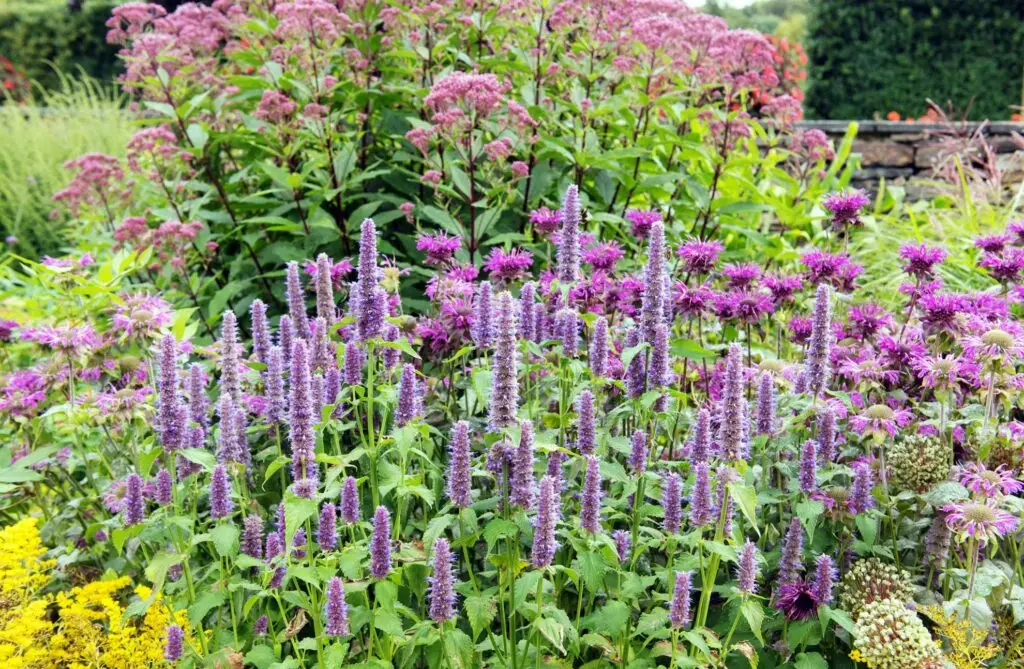
And on the other hand…there are non-native plants
Non-native plants are plants that are native to somewhere else. They are in our gardens because humans are creative, wonderful creatures who bring in things from all over—including plants! There are many non-native plants in our gardens:, including:
- Tulips (although associated with Europe, they are actually native to Central Asia)
- Daffodils (Spain/Portugal)
- Dahlias (Mexico)
Now that we know what native and non-native mean, let’s compare natives and non-natives in terms of gardening time and energy.
Non-native gardening = time, money, fertilizer, water
Non-native plants become a time-suck because they are not used to our homes’ weather, water, and soil. Non-native plants have evolved to thrive in their own home areas (or, they have been so significantly cultivated, they are just plain finicky.)
Examples of extra care for non-natives include:
- Dahlias: gardeners must plant each bulb individually in the summer, then dig them up again before the winter because the plant can’t handle cold temperatures
- Roses: can take lots of special attention (and water) throughout the seasons, including sometimes covering them in burlap prior to winter
- Tulips: need to be planted individually, and to keep them blooming special fertilizing is recommended every summer, alongside deadheading as soon as blooms fade
Let’s move away from the abstract and consider planning an actual garden.
How much time does non-native gardening take?
Imagine we plant a smallish (5 x 5 foot) garden with dahlias, a rose bush, and tulips somewhere in the Northeast, Midwest, or Mid-Atlantic.
Here’s the time it would take to get this non-native garden started and cared for:
Tulips and Dahlias
- Each tulip and dahlia bulb must be individually planted
- It takes approximately five bulbs per square foot (Horticulture Magazine)
- Our 5 x 5 garden = 25 square feet x 5 bulbs = 125 bulbs
- Each bulb needs a hole dug and bulb planted = 3 minutes per bulb
- 6.25 hours to plant the bulbs
Rose Bush
- Bare root roses need to sit in a bucket of water for a few hours before being planted
- The rose bush needs a hole dug, compost added, and mulch applied
- 3 hours to plant the rose bush
Further care
- When bugs arrive (roses are especially susceptible), environmentally friendly horticultural oil is applied (2 hours)
- Deadheading tulips, dahlias, and roses (4 hours)
- In the fall, dahlia bulbs must be dug up and stored indoors and roses need burlap or 2 inches of mulch (8 hours)
- 12 hours of additional gardening
23.25 hours for a small, non-native garden
These fussy non-native requirements are probably why many Americans think gardening is a chore. But it’s not—when you plant native.
Now, let’s see what it takes to keep a native garden going…
How much time does native gardening take?
Native plants literally plant themselves—they seed, thrive, and grow with no human help at all. They have done this for thousands of years in all the hurricanes, droughts, and seasons in their home areas. If they have thrived without any help, they can thrive without much help in your garden, too.
Once a native plant is established (usually after the first year, read more about what ‘established’ means in this short article), it should thrive with just rain and a yearly mulch/gravel application to keep the weeds down. Yes—that’s it.
After getting established, native plants will be happy with rain
Yes, that’s right. Established native plants will thrive in their home areas with normal weather and rain. So that saves hours of time watering, not to mention the higher water bills.
(*A note for the sticklers: of course, in times of extreme weather—extreme droughts, floods, or storms, some native plants may not survive. However: we’ve already experienced thousands of droughts/storms/floods and native plants have survived. Native plants are much more resilient, even in the toughest weather, than we may give them credit for. Want to discuss further? Get in touch!)
Cut down on weeding with mulch or gravel
The next worry is that having a native garden will require hours of back-bending weeding. There is a simple way to make weeding easy: put mulch or gravel around a plant after you plant it, or in the spring. That’s it!
Most weed seeds start growing when they find sunlight. Putting a layer of mulch or gravel helps keep light away, and keeps any weeds in their dormant seed-form. Voila—weeding now takes the time to finish a cup of coffee, as often as you’d like.
And one more tip to make gardening a breeze: plant perennials.
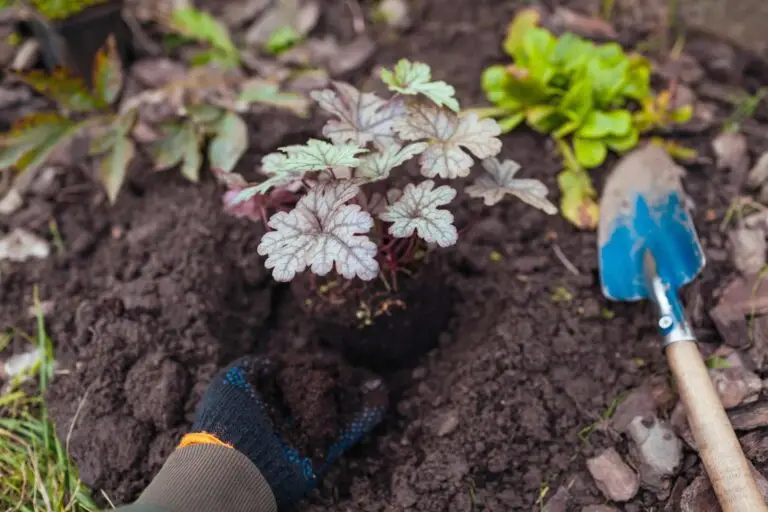
Native perennials come back year after year
Plant a native perennial once, and enjoy them for years and years—even decades! Spend an hour (or honestly, it can take just 15 minutes) planting a single native plant and enjoy it for years. Explore native perennials in our native plant library
Native gardens vs. Lawns
Lawns are much more time and money than native gardens
We’ve done the math: lawns can take 2400% MORE TIME than a native garden in terms of care and upkeep. See our stack-up of lawns versus native gardens to see more.
Lawn vs. native garden misconceptions probably come from the 177 BILLION DOLLAR landscaping and lawncare industry. (According to IBS World, “The market size, measured by revenue, of the Landscaping Services industry is $176.5bn in 2023.”)
Native plants are perfect for all types of gardeners—including the new or proudly lazy ones. You can absolutely have a beautiful garden of native plants and spend under five hours A YEAR in maintenance.
